How to fix USB errors that cannot be formatted and used in Windows
Do you have a flash drive that you cannot use? If it stops working for any reason, you will see that the memory is used up, even though there are no files inside or Windows does not allow you to format the drive. In the worst case, the pen drive name is not even displayed on your computer. To fix the USB cannot be formatted and used error, use the native Windows method or one of the other external tools mentioned in this guide.
1. Erase the USB using the Diskpart command line tool
Windows comes with a built-in format drive option to erase everything from the USB flash drive. This feature is accessible with a simple right click, but at this stage it may not work.
If you no longer need the data in the removable media, Diskpart, a command line tool, is a better way to help you root out the problem. To get started, run Command Prompt with admin rights. Make sure the USB is plugged in and perform the following steps.
1. As soon as it boots, enter diskpart, then list disk, which will provide a list of each drive connected to your computer. Here, you can quickly identify your USB based on its capacity.
2. Enter select disk #. Instead of #, you must insert the removable drive's numeric value of 1. You will see a success status message: 'Disk # now is the selected disk'.
3. To erase your removable media, type clean. This will completely empty the USB's contents.
Warning: Don't accidentally select your computer's hard drive number – in this case it's 0. It can completely erase your main hard drive, so be cautious!

Sometimes the USB drive may show 'no media' and 0 bytes, this is normal. As long as 'Disk 1' is properly displayed there is a USB drive in the system.
Even after you wipe the USB drive, your computer still cannot view it. The next step will fix this problem.
2. Re-allocate USB drive capacity from Disk Management Console
We will reallocate the USB drive volume from the previous section using the Disk Management Console, easily accessible from the search menu. Alternatively, press Win + R to open Run and enter diskmgmt.msc.
When the control panel window opens, right-click on your USB drive with 'unallocated' status and select New Simple Volume. In some Windows versions, it may be available as Create Simple Volume.
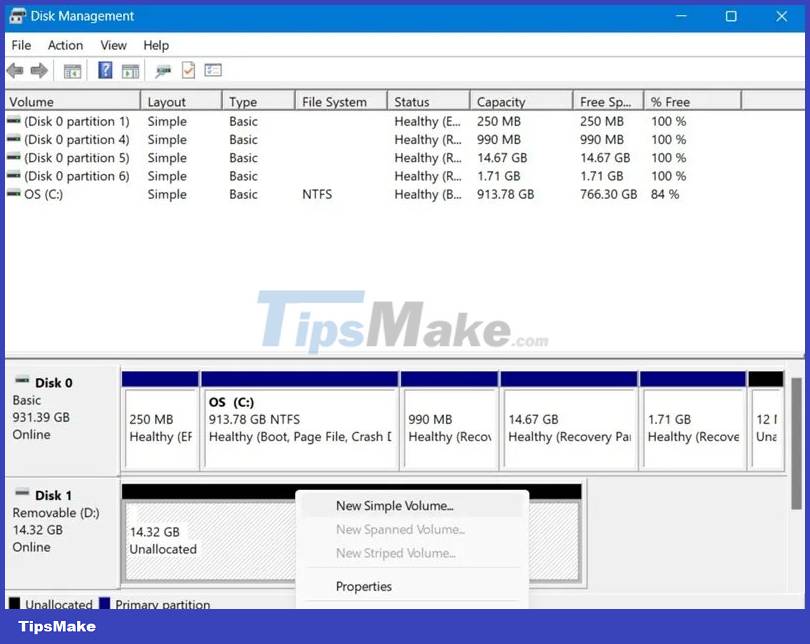
It will lead to a New Simple Volume Wizard pop-up window. Click Next to specify the volume capacity for the pen drive or select the maximum volume displayed as the default unit in MB, then click Next.
Select Assign the following drive letter. The example is selecting F, as shown here. Go to the Next screen.
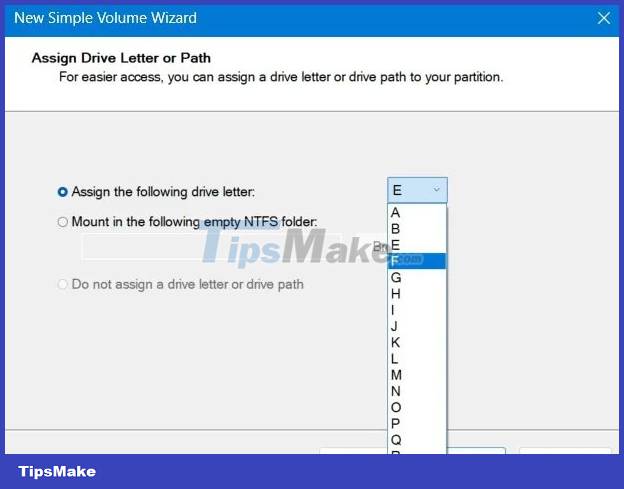
Format the partition in the next step. This may just be an extra step since you've already wiped the data.
Enter a name for the partition in the Volume field. Like the previous methods, select the file system, allocation unit size, etc. Then, go to the final screen and click Finish.
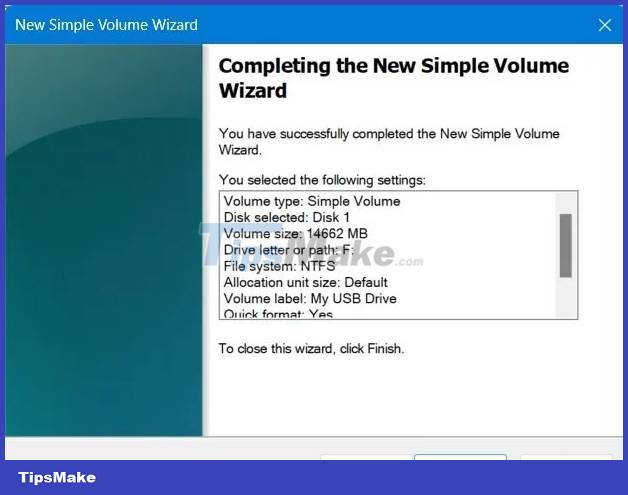
After reallocating the USB drive space, you will be able to view the USB memory in Windows File Explorer. The USB drive shows up as a normal active partition when you reopen Disk Management.
Third-party options
Here are some of the best third-party tools to fix and format unusable USB drives.
1. FormatUSB
Following closely to the original Windows method, the free 'FormatUSB' utility is one of the best ways to restore USB working state. You don't need to install anything, just a simple download and you're done.
This tool will automatically detect USB on your device. Then, turn on Quick Format and Check device for bad blocks. Click Start to restore the USB drive to its original condition.
After the process is completed, the utility will fix the USB error that cannot be formatted. It also solves many common USB errors, such as 'USB drive detected but not accessible', 'cannot format USB drive' and 'the disk is write-protected'.
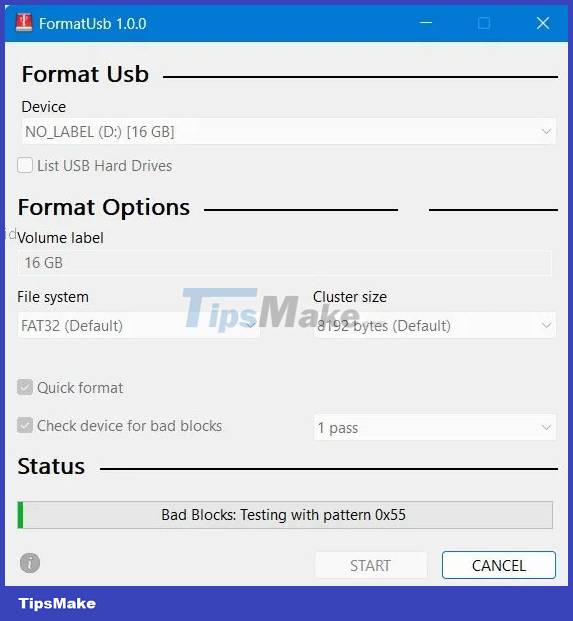
2. HDD LLF Low Level Format
LLF HDDs have been around for a long time and support low-level formats, such as USB, SATA and other hard drive forms.
Low-level formatting means the format will completely bypass the file system layer, erasing all data on the drive and giving you a fresh start. If your flash drive cannot be formatted due to bad sectors or unclear files, this tool will help you.

Other external tools that can be used to recover inaccessible USB drives are:
- Recovery tool: If your flash drive is unreadable or recovering bad sectors, JetFlash has the ability to force the formatting process and give your seemingly damaged flash drive a new lease of life. It works with Transcend as well as other USB drives.
- Format tool: Has an extremely easy-to-use interface. HP USB Disk Storage can quickly format any problematic USB drive.
Find out if your USB drive is damaged
We must clarify the difference between a USB drive that 'cannot be formatted and used' and a 'damaged/problematic' drive. When a USB is damaged beyond repair, there is no other choice but to replace it. On the other hand, if you cannot detect or use removable media then it can be repaired.
Let's take the typical situation where your computer/laptop can easily detect the USB drive and you just want to know if it is bootable or damaged.
Open File Explorer and find your drive under This PC on the left. Select Properties of the USB drive folder and check the Hardware status. If it says 'This device is working properly' then the USB drive is worth saving.
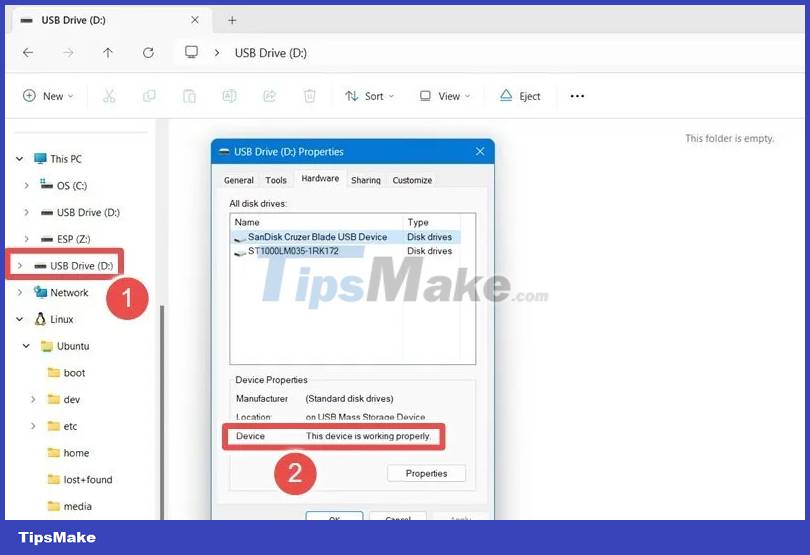
You can also use chkdsk /*Drive Name*/: /f /x in Command Prompt or Windows Terminal to identify and resolve any errors. It mainly consists of your USB drive letter after the chkdsk entry which you can find in File Explorer.
Accordingly, /f refers to any attempt to fix errors on the USB drive, and /x will force the USB drive to be unmounted before attempting any scans. As shown below, chkdsk shows no errors or bad sectors in the USB drive.
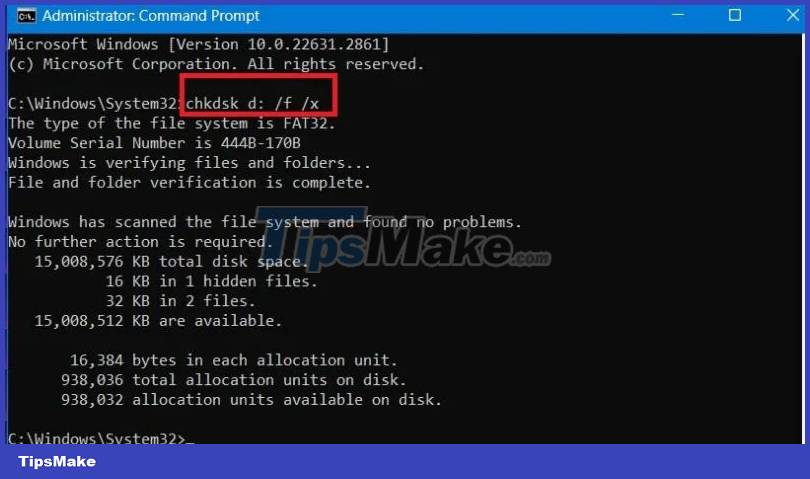
After recovering your USB drive, you may need to create a bootable flash drive using Rufus, one of the best tools for that purpose. If your pen drive contains sensitive information, you should learn how to encrypt and decrypt the device.
You should read it
- How to fix A20 Error when starting the computer
- How to fix Read-only of external hard drive on Mac
- 8 ways to fix USB error that does not display capacity without formatting
- How to fix non-formatted memory card by using the software
- How to fix 'This App Can't Run on Your PC' error on Windows 10
- Instructions on how to fix unformatted memory cards are simple and effective
 5 best USB flash drives today
5 best USB flash drives today The computer cannot compress the file, what should you do?
The computer cannot compress the file, what should you do? VeraCrypt - Free disk encryption tool
VeraCrypt - Free disk encryption tool The world's fastest 1.5 TB microSD card
The world's fastest 1.5 TB microSD card How to Use USB Bluetooth
How to Use USB Bluetooth How to Format a USB if Windows Can't
How to Format a USB if Windows Can't